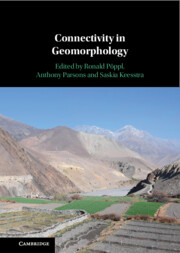Part III - Quantifying Connectivity in Geomorphology
Published online by Cambridge University Press: 10 April 2025
- Type
- Chapter
- Information
- Connectivity in Geomorphology , pp. 191 - 284Publisher: Cambridge University PressPrint publication year: 2025

